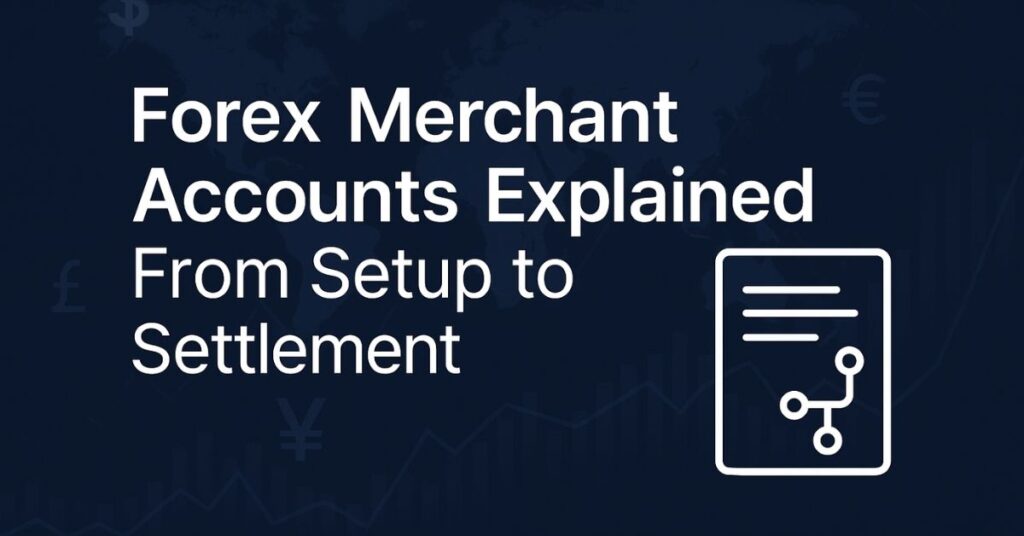
Having a dedicated forex merchant account lets businesses handle foreign exchange payments without relying on standard merchant solutions. This guide walks you through what a forex merchant account involves, how to get started, and what happens after you’re up and running.
What Is a Forex Merchant Account?
A forex merchant account is a specialized payment gateway that accepts multiple currencies, processes foreign exchange at competitive rates, and settles funds into your base currency. Unlike traditional merchant accounts, it’s built to handle the compliance requirements and risk factors unique to currency trading and international transactions.
Key features include:
- Multi-currency acceptance: Customers can pay in their local currency.
- Real-time FX rates: Access to live exchange data rather than fixed, outdated rates.
- Regulatory compliance: Automated checks for anti-money laundering (AML) and know-your-customer (KYC) rules.
Businesses offering brokerage services, online trading platforms, or global subscription models will find a forex merchant account more effective than a standard solution.
How to Open a Forex Merchant Account
1. Gather Your Documentation
Most providers require:
- Company registration papers
- Proof of ownership
- Bank references
- Personal ID documents for directors
2. Complete the Application
Head to the provider’s sign-up page—if you’re looking for a reliable partner, visit inquid’s merchant account page. You’ll fill in business details, expected transaction volumes, and preferred currencies.
3. Undergo KYC and AML Checks
Your provider reviews all submitted documents and runs compliance checks. This step typically takes between two and five business days, depending on the thoroughness of your paperwork.
4. Integration and Testing
Once approved, you receive API keys or plugin files. Developers can integrate these into your website or trading platform. Most platforms offer a sandbox environment so you can test transactions without moving real funds.
From Setup to Settlement: What Comes Next
Processing Transactions
When a customer pays, the payment gateway automatically converts the amount into your base currency. You’ll see clear breakdowns of FX rates applied, transaction fees, and net proceeds. Detailed dashboards let you filter by date, currency, or client account.
Fund Settlements
Settlements often occur daily or weekly. Your provider deposits the converted funds directly into your designated bank account. With transparent reporting, you can reconcile your books without manual calculations.
Handling Chargebacks and Disputes
Chargebacks in forex can be more complex due to currency fluctuations. A good provider offers a dispute-management portal where you submit evidence and track claim status. Always keep transaction logs and customer communications on file.
Tips for Smoother Operations
- Monitor FX Fees: Even small markup percentages add up on large volumes. Compare incoming rates to interbank benchmarks.
- Set Clear Refund Policies: Publish a refund timeframe and explain how exchange rates affect returns.
- Use Automated Reporting: Tools that export daily summaries in CSV format save hours on accounting.
- Stay Informed on Regulations: AML and KYC requirements change across jurisdictions. A provider with regular updates keeps you compliant.
Ready to Get Started?
If you’re preparing to handle international payments without extra hassle, consider partnering with a platform designed for businesses like yours. Visit inquid’s main site to learn more about their services, or reach out directly via their Contact Us page to discuss your needs.
With this workflow—from gathering documents to final settlements—you’ll manage forex transactions confidently and keep your focus on growing your business.

Pingback: Forex Payment Processing for High-Risk Businesses